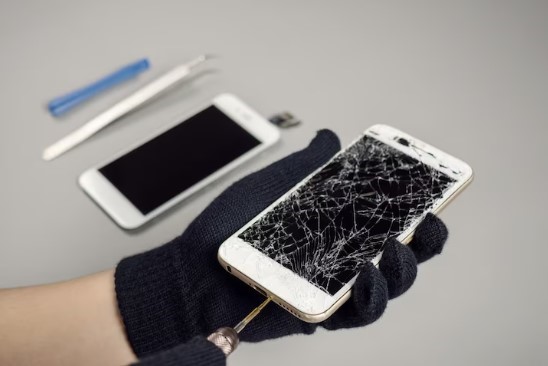In today’s fast-paced world, our iPhones have become an essential part of our lives. From staying connected with loved ones to managing our daily tasks, these sleek devices have transformed the way we live. However, accidents happen, and iPhones are not immune to damage. Whether it’s a cracked screen or water damage, the cost of repairs can be a real pain in the pocket. In this comprehensive guide, we’ll explore the best practices for preventing iPhone damage and keeping your device in pristine condition. So, let’s dive in!
1. Understanding the Vulnerabilities
iPhones are remarkable devices, but they are not invincible. It’s essential to understand their vulnerabilities to effectively prevent damage. Some of the most common issues include:
Cracked Screens: iPhone screens are made of glass, which can easily crack upon impact. Even a small crack can worsen over time, affecting both aesthetics and functionality.
Water Damage: iPhones are sensitive to moisture. Water damage can lead to malfunctions in various components, including the battery, screen, and internal circuitry.
Battery Problems: Over time, iPhone batteries can degrade, leading to reduced battery life and unexpected shutdowns.
To prevent these issues, it’s crucial to take the necessary precautions.
2. Investing in a Sturdy Case
Investing in a sturdy case for your iPhone is an essential step in preventing damage. Here’s why:
Shock Absorption: Sturdy cases are designed to absorb shocks and distribute the impact energy, minimizing the chances of damage during accidental drops.
Corner and Edge Protection: Ensure the case covers all edges and corners of your iPhone, as these are the most vulnerable areas during falls.
Scratch Resistance: A good case not only protects against drops but also shields your iPhone from scratches and scuffs, preserving its appearance.
3. Screen Protectors: Your First Line of Defense
Screen protectors play a vital role in safeguarding your iPhone’s display. Here’s why they are your first line of defense:
Scratch Prevention: Screen protectors create a durable barrier that prevents scratches from keys, coins, and other objects that may come into contact with your phone.
Crack Prevention: In the event of a fall or impact, a screen protector can absorb some of the force, reducing the likelihood of a cracked screen.
Additional Features: Some screen protectors come with added features like blue light filtering, which reduces eye strain from prolonged screen exposure.
4. Water Damage: How to Avoid It
Water damage is a common iPhone issue, but you can take steps to avoid it:
Waterproof Cases: Consider investing in a waterproof case, especially if you’re often near bodies of water. These cases provide an extra layer of protection against water ingress.
Avoiding Risky Situations: Be cautious when using your iPhone near water. Avoid taking it into the bathroom during showers or using it poolside.
Immediate Action: If your iPhone does get wet, act quickly. Power it off, remove the SIM card tray, and use a cloth to gently dry the exterior. Then, seek professional assistance to thoroughly assess and address the damage.
5. Proper Charging Habits
Proper charging habits are crucial for maintaining your iPhone’s battery health:
Unplug When Fully Charged: Overcharging can lead to long-term battery degradation. Unplug your iPhone once it reaches 100% charge to prevent this.
Use Certified Chargers and Cables: Using third-party or uncertified chargers and cables can pose risks. Stick to genuine Apple accessories or reputable third-party alternatives.
Battery Health Settings: Check your iPhone’s battery health settings regularly to monitor the condition of your battery. If it’s significantly degraded, consider getting it replaced.
These practices will help extend your iPhone’s battery lifespan.
6. Handling Extreme Temperatures
Extreme temperatures can impact your iPhone’s performance and battery life:
Heat: Avoid leaving your iPhone in direct sunlight, as high temperatures can cause it to overheat, leading to performance issues and potential battery damage.
Cold: Extremely cold temperatures can also affect your iPhone’s battery life and screen responsiveness. Keep your device warm during frigid conditions.
By being mindful of temperature extremes, you can protect your iPhone’s functionality.
7. Regular Software Updates
Regularly updating your iPhone’s software is not just about getting new features; it’s crucial for security:
Security Patches: Software updates often include important security patches that protect your device from vulnerabilities and potential threats.
Bug Fixes: Updates also address known issues and bugs, enhancing the overall stability and performance of your iPhone.
Compatibility: Keeping your software up to date ensures compatibility with the latest apps and services.
8. Maintaining a Clean iPhone
Regularly cleaning your iPhone helps prevent dust and debris-related problems:
Screen Cleaning: Use a soft, lint-free cloth to clean the screen. Avoid abrasive materials that could scratch the display.
Camera Lens: Keep the camera lens clean for better photo quality.
Ports and Openings: Use compressed air or a soft brush to remove dust from ports and openings, such as the charging port and speakers.
A clean iPhone not only looks better but also functions better.
9. Avoiding Unauthorized Repairs
Choosing authorized service centers or iPhone technicians is essential to prevent further damage:
Warranty Protection: Unauthorized repairs can void your warranty. Always opt for authorized repair services to maintain warranty coverage.
Quality Assurance: Authorized technicians are trained to provide quality repairs using genuine parts, reducing the risk of complications.
Safety: Authorized repairs are safer, minimizing the chances of damaging your iPhone during the repair process.
10. Backup Your Data: Always Be Prepared
Data loss can be devastating, so it’s crucial to back up your iPhone regularly:
iCloud Backup: Set up automatic iCloud backups to ensure your data is securely stored in the cloud.
Local Backup: You can also back up your iPhone to a computer using iTunes or Finder for added security.
Conclusion: Protect Your Investment
Your iPhone is more than just a device; it’s an investment. By following these best practices for preventing iPhone damage, you can ensure that your iPhone serves you faithfully for years to come. Remember, a little care goes a long way in preserving your digital companion.
